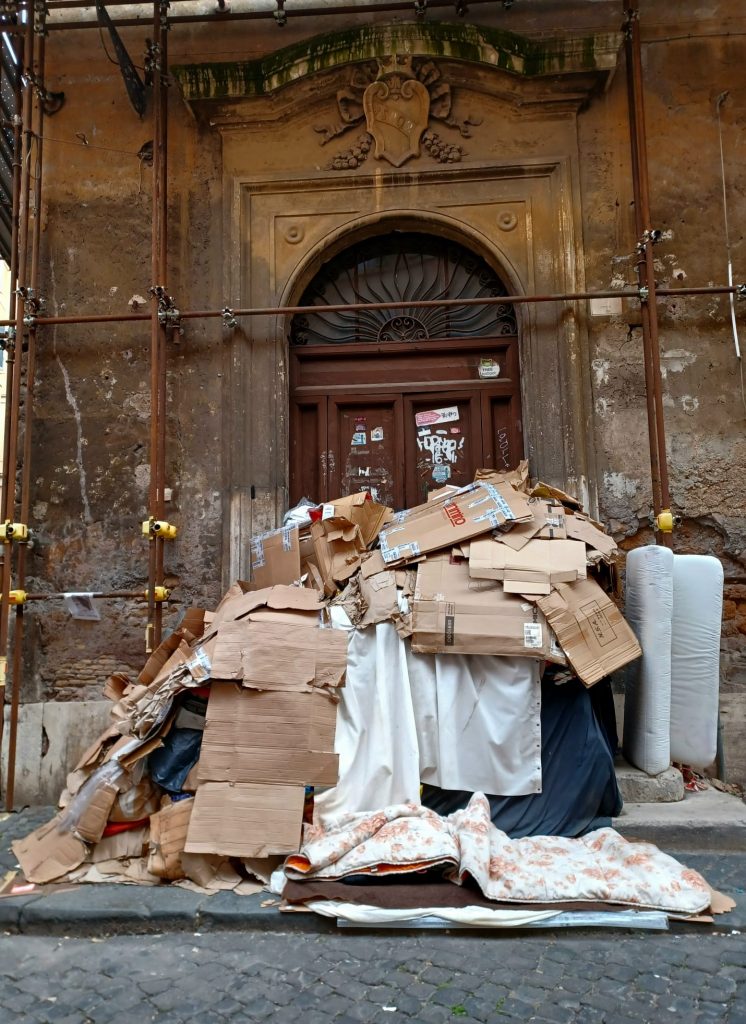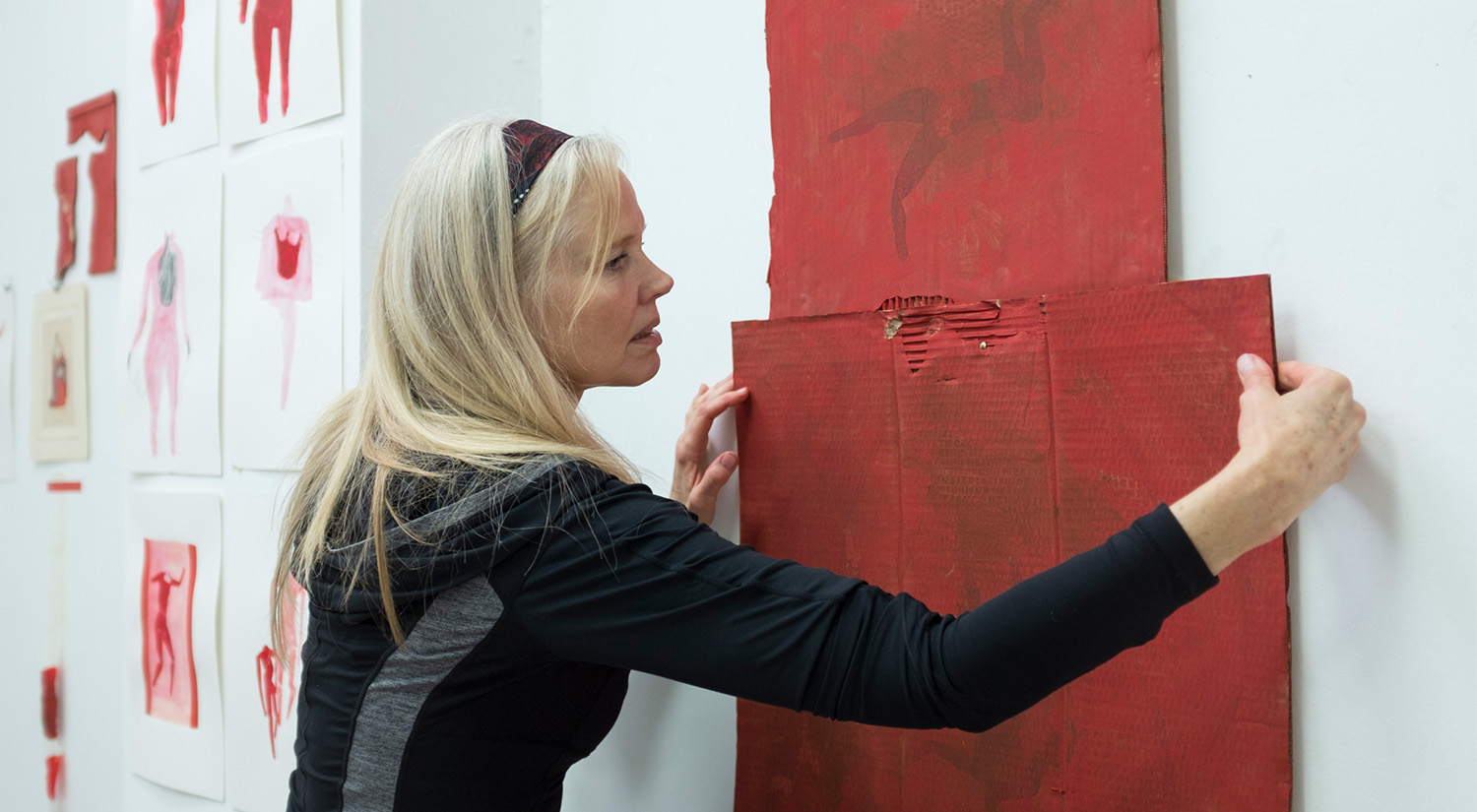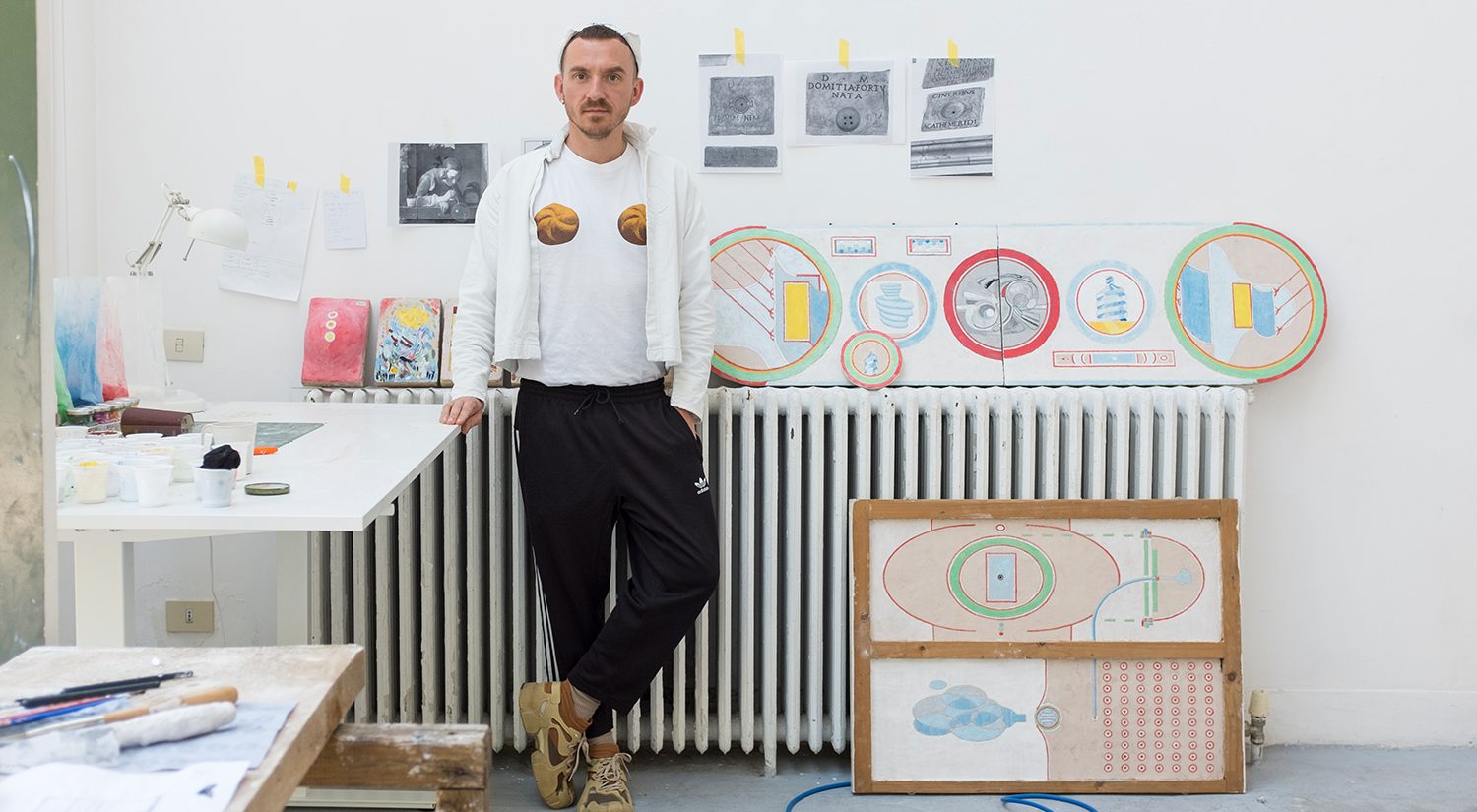An interview with Sharon Kelly, winner of Arts Council of Northern Ireland Fellow, in which she speaks about the work she has produced during her residency at the BSR from January – March 2023, ahead of the Winter Open Studios.
Your six-months residency at the BSR started in January 2020 but has been interrupted two months later, when COVID hit the world. Are you continuing the research you started three years ago or are you working on another project?
When I arrived in Rome in early 2020, my research interest was human anatomy collections locally and further afield such as Florence, Bologna and Naples. In terms of my practice, the body has been a central motif and in particular the broken body, exploring mind-body synergy, liminality and transformation. When I arrived in 2020, I was responding in my work to encounters with illness, healing and trauma – arriving in Rome at that time was a very emotional experience.
However for the short period I was here, the collections I encountered had huge resonances for my work, long after I returned to Ireland.
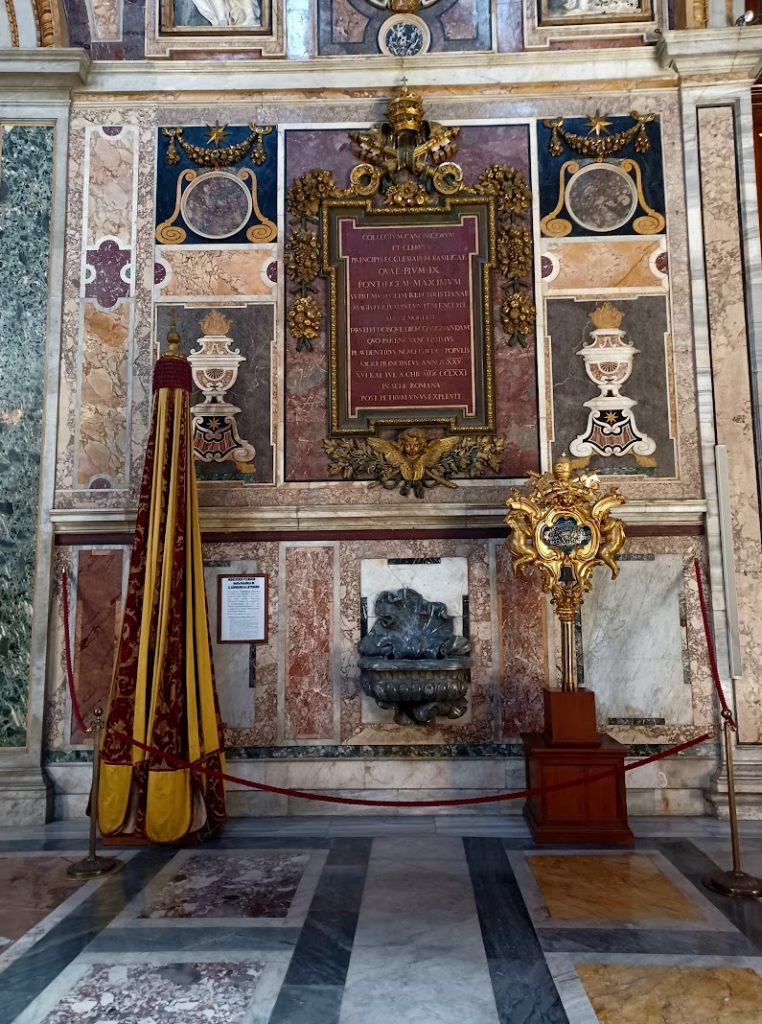
Three years later, I have now made the previous cancelled visits to the wax anatomical collections in Bologna in particular, and yet I do feel that the focus of the work has developed in new directions since 2020. I have been able to absorb the general resonances of the city, visiting various basilicas, catacombs, and art collections. In my work, I generally use colour in a very limited, mindful way and the first materials I purchased here in Rome were red ink and red gouache. I felt the need to explore the colour further and so restricted my palette to variations of red. I found myself drawn to and documenting red across the city. Instinct has directed the work and the use of humble materials, such as paper, cardboard and discarded objects. Red has held interesting symbolism through time and its use in the days of the Roman Empire, speaks of status, power and empire.
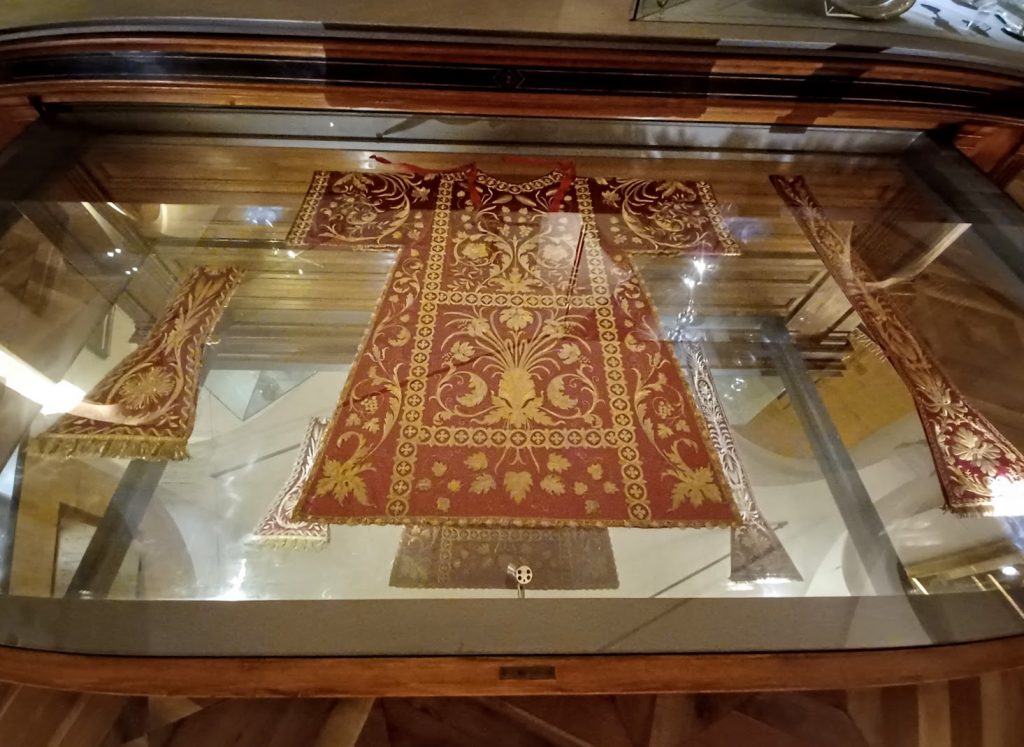
For example the highly prized red porphyry marble was used for statues and columns; the ancient Roman military clothing and regalia were dominantly red. Roman generals had their bodies painted red to celebrate victory.
Red is the dominant and longest lasting of the Etruscan fresco colours, speaking out to us from the past. Red is bold and affirmative in many ways, but it also harbours other messages… it can symbolise warning and danger; it has been an important colour in clerical vestments, symbolising not only authority but martyrdom. Its universally the colour of blood and very much a connecting thread back to my previous work around the body, human connection and experience.
I am very much enjoying working both 2 and 3 dimensionally, expressing ideas around the human condition, responding as well to the contrasting forces of wealth, grandeur and the humble, using scale, colour and material.

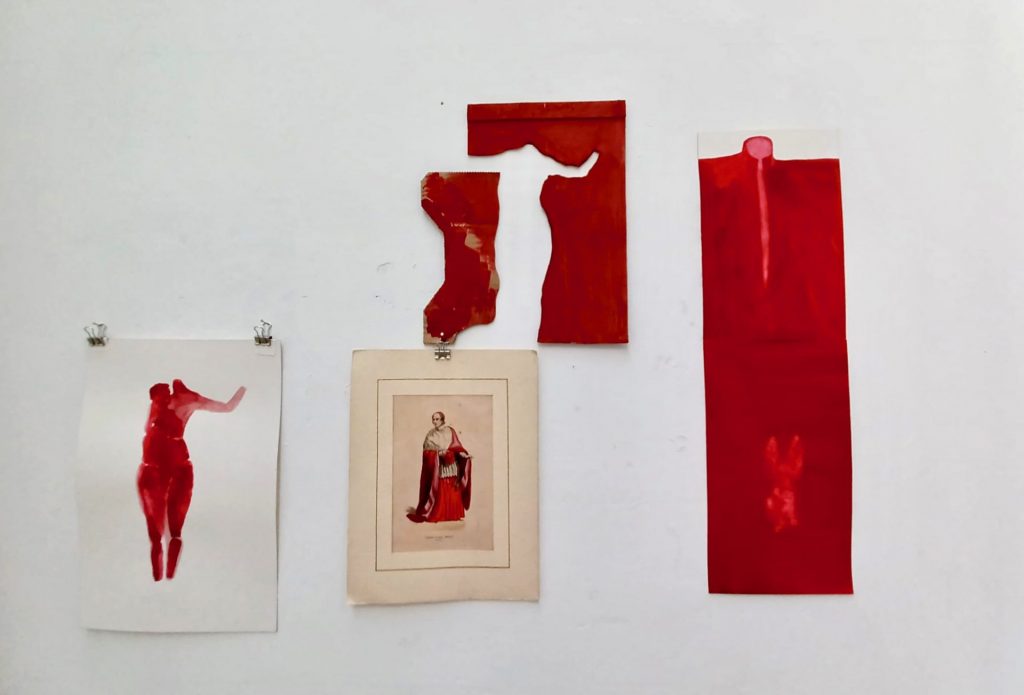
You said that having overwhelming experiences in your life such as living in a city like Belfast, with its recent past of conflict and gradual transition to a peaceful state, has had an impact on your work. Could you tell us more about it?
Belfast is an amazing city its people are humorous, hardy and resilient and like other places across the North of Ireland, it has endured many traumas. The residue of conflict is still there, not only in the fabric of the city, which is shifting continually, but in the minds and souls of the people. I have lived in Belfast for 40 years and witnessed and observed how trauma is harboured.
My work relates to both the physical bodily spaces and also to the psychological states.
There have been personal experiences that have indeed overwhelmed me in the distant and the recent past and these experiences have been always been negotiated in the backdrop of a wider communal trauma, but that is life. And art is a positive force in the world…
